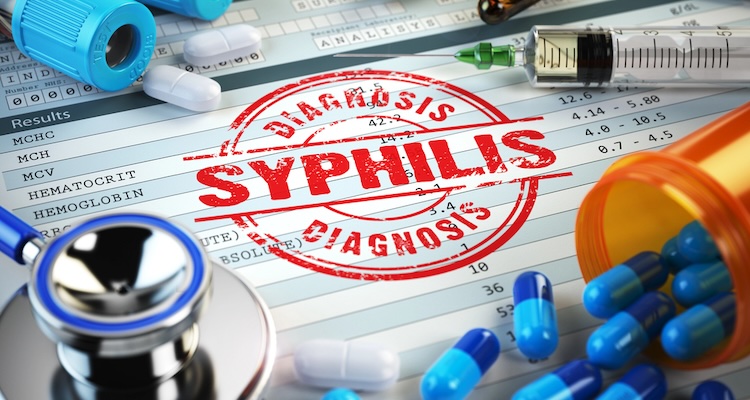Prevention Starts at Home: FDA Green Lights 15-Minute Syphilis Test
Joins quick and easy gonorrhea and chlamydia checks in battle against STIs

Last month, the United States Food and Drug Administration (FDA) approved what could prove to be a major step towards combating syphilis, one of the world’s most prevalent Sexually Transmitted Infections (STIs).
The fifteen minute, at-home test developed by NOWDx is scheduled to be available to the public before next year—and couldn’t come at a more opportune time—with healthcare authorities alerted to an alarming rise in reported cases.
The importance of fast, easy testing
“Syphilis is like the canary in the coal mine,” Barbara Van Der Pol, a University of Alabama at Birmingham epidemiologist, told Scientific American, “When our public health infrastructure starts to fail, syphilis always increases.”
Previously a San Francisco Department of Public Health’s STD Prevention and Control Services director, now Keck School of Medicine of the University of Southern California epidemiologist Jeffrey Klausner agrees, calling the new test “A real breakthrough.”
In a company press release, Rob Weigle, the CEO of NOWDx, said, “For the first time ever, consumers now have a fast and simple syphilis test that can be performed in the privacy of one’s home, with a result in minutes.”
According to the First To Know® pre-launch site, all that’s necessary to begin testing is a single drop of blood, and ecommends anyone testing positive immediately contact their local Health Department.
Eight million—and rising
In 2020, the World Health Organization (WHO) estimated the global number of adult syphilis exposures at eight million, while the CDC (Centers for Disease Control and Prevention) labels it as a priority, noting a nearly 80% increase in cases over the last five years.
RECOMMENDED READ: Good for What Ails Us? Broad Spectrum Morning-After STI Pill Shows Promise
While syphilis bacterial infections frequently occur via exposure to an exposed person’s open sore or, in its secondary stage, one or more rashes, initial signs may not be easily recognizable. Many sexual healthcare professionals recommend preventative measures such as the stringent use of safe(r) sex barrier protections like condoms, dental dams, etc.
If left untreated, syphilis can lead to serious, potentially life-threatening neurological and cardiac conditions. Worse, it is transmittable from mother to their unborn infant.
Test once, test twice, test often
It’s long been understood one of the most effective techniques in reducing STI cases is for sexually active persons, in addition to adhering to safe(r) sex guidelines, to get tested for a range of different sex-related conditions.
Until First To Know®, it has been physically and sometimes financially difficult to impossible for many people to test for syphilis regularly.
Now, in addition to last year’s FDA green lighting at-home tests for gonorrhea and chlamydia, a higher percentage of at-risk persons can check their STI status—hopefully reducing the infection rate the WHO, CDC, and here in our own pages, have been warning about.
As Barbara Van Der Pol from the University of Alabama at Birmingham told Scientific American, “Instead of avoiding it, it will help people catch things earlier.” She added that the approval is “a great thing.”
Prevention equals pound of cure
Combining home testing with promising medicinal breakthroughs such as the wide-spectrum STI treatments and reexaming how dating app culture’s reckless disregard for sexual safety may have fostered the current spike in syphilis cases, we might not only turn but actually stem the frightening rise of easily-preventable conditions like chlamydia, gonorrhea and especially syphilis.
We can do this only if we hold ourselves accountable. Instead of shirking our responsibilities as sexually active adults, we should—no, must—wake up and smell reality, as in the only thing standing between where we are now and a society where sex may or may not be a death sentence, is for us to know everything you possibly can about sex, sexually transmitted infections, the crucial differences between consent and non-consent, and—maybe most importantly of all—getting frequently and consistently tested.
Image Sources: Depositphotos

















